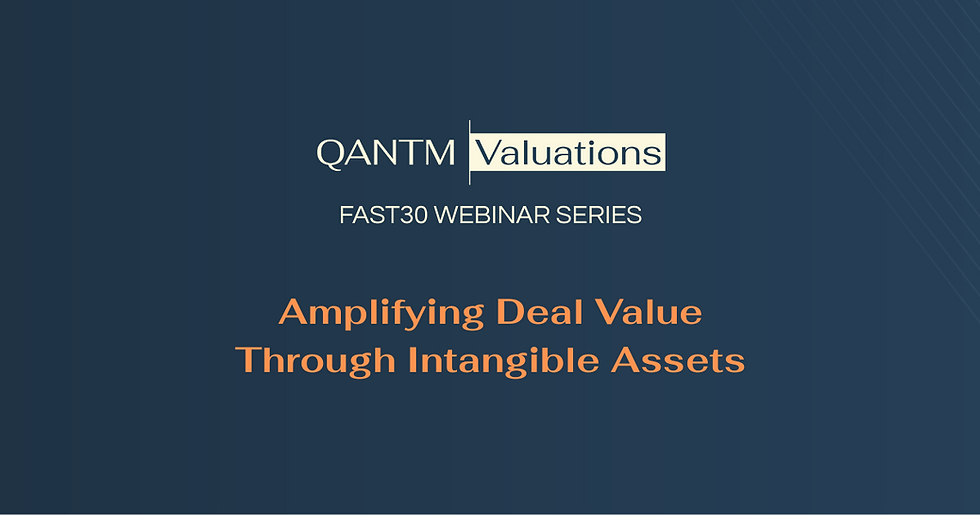Valuing What You Can’t Touch: Insights from Tek Talk
- selina0319
- Sep 27
- 2 min read
The foundation of business value has shifted. In 1975, only 17% of enterprise value was derived from intangible assets. Today, intangibles account for around 90% of corporate worth globally. Patents, software, algorithms, brands, customer data, relationships, trade secrets, and know-how are now the real drivers of competitiveness.
Yet under current accounting standards, much of this value remains invisible. Balance sheets typically recognise intangibles only when acquired through M&A activity or licensing. Internally developed assets such as culture, customer loyalty, or brand equity are rarely captured. The result is a strategic blind spot: businesses often underestimate or under-communicate their true value.
Valuation as a craft
Capturing intangible value requires more than running financial models. It is a craft that blends technical, legal, and commercial expertise. The process begins with mapping how a business really works identifying the “cogs” that drive cash flows, followed by deep-dive assessments of the assets that underpin those mechanisms. Only then can valuation outputs be robust, defensible, and useful in high-stakes contexts such as fundraising, M&A, or litigation.
Proof in practice
When valuations are framed in this way, they can alter the trajectory of entire companies. In one case, a pre-revenue industrial technology business struggled to attract investor interest despite a solid prototype and business plan. A comprehensive intangible assessment, benchmarking tool, and patent analysis reframed the opportunity. The result was funding secured at the top of expectations, with investors now able to clearly see the scale of the innovation and its defensibility.
Human expertise in the age of AI
As artificial intelligence transforms industries, the question arises: can AI replace valuers? The answer is clear. AI can accelerate due diligence, process large data sets, and highlight gaps, but it cannot deliver the credibility required for regulators, auditors, or investors. Defensible valuations still depend on human judgment, professional standards, and sign-off from experienced practitioners. The future is not human versus AI, but the combination of both: human expertise empowered by AI-driven tools.
Looking ahead
From demographic shifts driving deal activity in the United States, to increasingly complex cross-border IP portfolios, one reality is constant: sustainable growth depends on understanding and managing intangibles. Companies that achieve visibility into these hidden drivers of value are better equipped to negotiate, to integrate acquisitions successfully, and to defend their worth in a rapidly changing global market.
Make sure yours aren’t a blind spot. Explore how QANTM Valuations can help you capture and communicate hidden value.



Comments